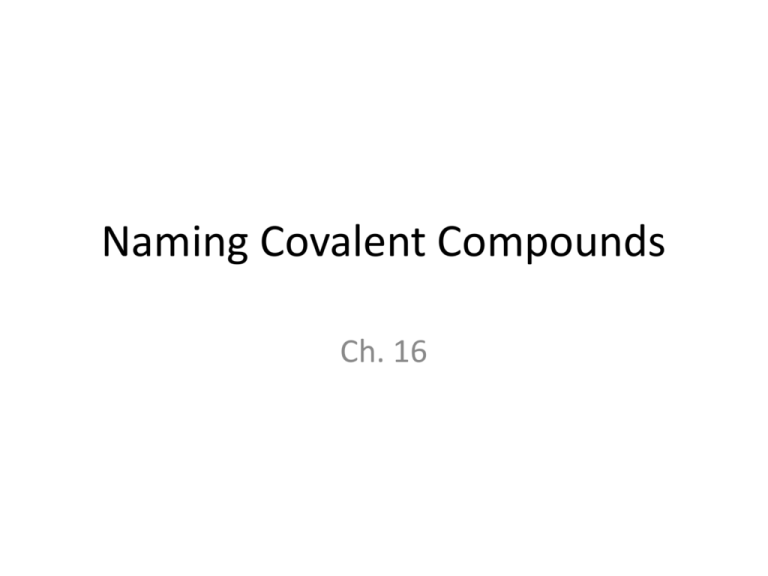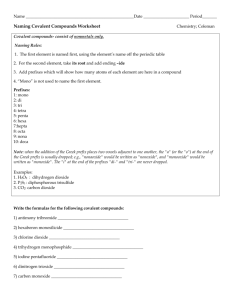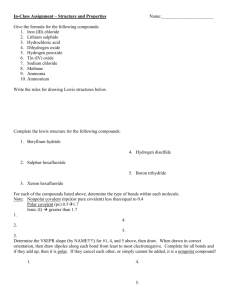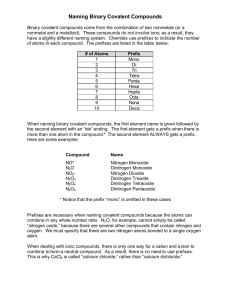Naming Covalent Compounds
advertisement

Naming Covalent Compounds Ch. 16 Covalent Compounds • Covalent bonds form when atoms share their valence electrons. • Covalent compounds are formed from 2 or more nonmetals. Rules for Naming Covalent Compounds 1. Prefixes are used to show how many atoms of each element are present in the compound Prefixes used for Naming Binary Covalent Compounds Rules for Naming Covalent Compounds 2. Second element is written with an –ide ending. ***All binary compounds, both ionic and covalent end in –ide. 3. The vowel at the end of the prefix is dropped when the name of the element begins with the same vowel. Example: monoxide, not monooxide Rules for Naming Covalent Compounds 4. Mono is not written if there is just a single atom on the first element in the name. Example: CO2 carbon dioxide not monocarbon dioxide Example: CO carbon monoxide Diatomic Molecules There are 7 nonmetals that exist in nature as diatomic molecules. Di-Atomic (means 2) atoms Formula: Br2 I2 How to Remember- N2 Cl2 H2 O2 “BrINCl HOF” F2 Problems Are the following compounds ionic or covalent? a. H2O f. dinitrogen tetraoxide b. Sodium chloride g. FeS c. CuSO4 h. Cobalt (III) chloride d. CO e. Lithium hydroxide i. H2S j. PF3 Writing Formulas From Names Write the formulas for the following compounds. 1. carbon monoxide CO 2. nonacarbon tetrachloride C9Cl 4 3. hexabromine dioxide 4. phosphorus trichloride Br6O2 PCl3 5. octanitrogen pentafluoride N8F5 Naming Binary Compounds (Covalent) 1. SO2 2. N2O 3. CCl4 4. N2O5 5. N2O4 6. OF2 Sulfur dioxide Dinitrogen monoxide Carbon tetrachloride Dinitrogen pentaoxide Dinitrogen tetraoxide Oxygen difluoride








